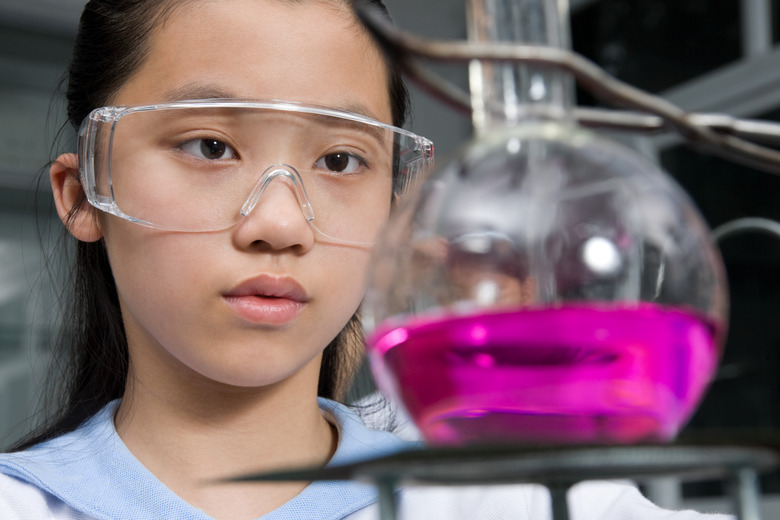Hands-On Science Activities On Blood
Kids are prone to scraped knees and minor cuts as they play, rough-house and explore their world. The sight of blood may make some kids squeamish, so this is a good time for interactive science projects about blood. Teach them about blood with simple demonstrations to help them understand its many life-giving functions, how it moves in the body and what it's made of.
Why Blood Is Red
Why Blood Is Red
This simple science experiment teaches kids about erythrocytes, the red blood cells that give blood its color, and plasma, the watery part of blood. Teach your child that these blood cells carry oxygen to every part of the body as you conduct the experiment together. Pour some lemonade into a tall glass so that it is one-third full and explain that this is the plasma, or liquid part, of the blood. Next add small pieces of red jelly to the glass until it is full. The contents of the glass should now appear red. Use the glass to demonstrate that this is how red blood cells make blood red. Afterwards, enjoy the jelly-lemonade treat together.
How Blood Clots
How Blood Clots
Teach children how their body heals itself with an activity about blood clotting. Make a "blood" solution by mixing tomato paste with water. Ensure that it is fairly thick but has an even consistency. Pour the solution into a plastic funnel and show your child how the "blood" runs through into a clear bowl below. Next, explain how the body uses millions of tiny platelets found in blood to help slow down bleeding and make blood clot. Have your child spoon dry beans into the funnel as you pour the "blood" solution into it. Keep asking him to add more "platelets" until the funnel is plugged up and the "blood" solution cannot pass through. Talk to your child about platelets and how they stop bleeding and help keep us healthy.
Blood Model
Blood Model
Children and adults alike are mesmerized by snow globes. Make a "blood globe" to teach children about the many components found in blood. You will need a jar with a very tightly fitting lid. Fill the jar halfway full with water and add a few drops of red food coloring to turn the liquid a pink shade. Add about 10 small red buttons to depict the red blood cells, and five larger white buttons as the white blood cells. Make platelets out of small scrunched up pieces of foil and add them to the jar. Seal the lid and turn the jar over to show what blood looks like under a microscope. Label the outside of the jar so that older children know what each object represents.
Blood Flow Experiment
Blood Flow Experiment
This experiment can help teach kids about the benefits of healthy eating and how blood moves through the body. Make a delicious "blood" punch using raspberry or cherry juice. Use three straws to represent blood vessels. Wrap a rubber band around the middle of one straw to completely close it. Wrap another straw so that it's partially closed, and leave the third one completely open. Explain to your child that the straws are blood vessels, but some of them have been damaged and narrowed by too much cholesterol in the body from junk food. Ask your child to take a sip of the "blood" using each straw, to show how blood moves more easily through healthy blood vessels.
Cite This Article
MLA
, June Kane. "Hands-On Science Activities On Blood" sciencing.com, https://www.sciencing.com/list-6543292-hands-on-science-activities-blood/. 9 January 2018.
APA
, June Kane. (2018, January 9). Hands-On Science Activities On Blood. sciencing.com. Retrieved from https://www.sciencing.com/list-6543292-hands-on-science-activities-blood/
Chicago
, June Kane. Hands-On Science Activities On Blood last modified August 30, 2022. https://www.sciencing.com/list-6543292-hands-on-science-activities-blood/
